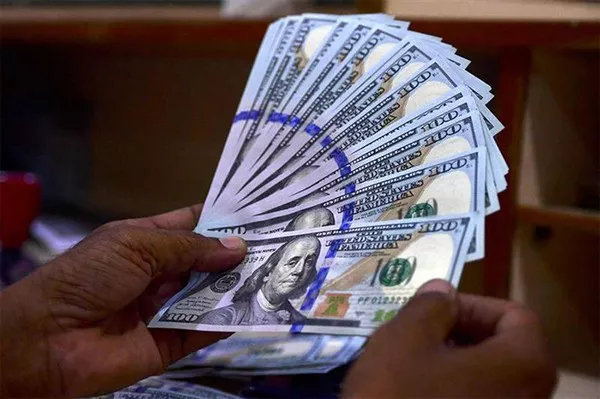The exchange rate between the United States Dollar (USD) and the Mexican Peso (MXN) is a crucial aspect of international trade, finance, and economic stability. For those who regularly follow global financial news or engage in cross-border transactions, the USD to MXN exchange rate holds particular significance. This article aims to provide an in-depth analysis of what the dollar-to-peso exchange rate is, the factors influencing it, its implications, and its broader economic and geopolitical context.
The Basics: What Is the Dollar-to-Peso Exchange Rate?
The dollar-to-peso exchange rate, often represented as USD/MXN, is the relative value of one US dollar in terms of the Mexican Peso. It tells us how many pesos one can exchange for one US dollar. Exchange rates like USD/MXN are dynamic and fluctuate based on a variety of economic, financial, and geopolitical factors.
Exchange rates are quoted in two ways: direct and indirect. In the direct quotation method, which is used for most major currencies, the USD/MXN exchange rate tells you how many pesos you can obtain for one US dollar. In contrast, an indirect quotation method would provide the number of US dollars you’d receive for one peso. As the direct quotation method is commonly used for USD/MXN, a higher exchange rate means a stronger US dollar and a weaker Mexican peso.
Factors Influencing the Dollar-to-Peso Exchange Rate
Several factors influence the dollar-to-peso exchange rate. Understanding these factors is essential for predicting exchange rate movements and their economic implications. The key factors include:
Interest Rates: Central banks in both the United States and Mexico set interest rates, which can have a significant impact on the exchange rate. A higher interest rate in the US can attract foreign capital, leading to an appreciation of the US dollar and a depreciation of the peso.
Inflation Rates: Differences in inflation rates between the two countries can also affect exchange rates. Higher inflation in Mexico can lead to a weaker peso, as it erodes the purchasing power of the currency.
Economic Indicators: Economic data, such as GDP growth, employment figures, and trade balances, play a vital role in exchange rate movements. Strong economic performance in the US relative to Mexico can lead to a stronger US dollar.
Political Stability: Political stability in Mexico can attract foreign investments and positively affect the peso. Conversely, political turmoil or uncertainty can lead to depreciation.
Trade Balance: A country’s trade balance, particularly its trade surplus or deficit, can affect the exchange rate. A trade surplus (more exports than imports) can lead to an appreciation of the currency, while a trade deficit (more imports than exports) can lead to depreciation.
Speculation: Currency traders and investors often speculate on future exchange rate movements. Speculative activities can lead to short-term fluctuations in the exchange rate.
Market Sentiment: Market sentiment, influenced by geopolitical events, news, and global economic conditions, can impact currency markets. Positive news about Mexico’s economy can boost the peso, while negative events can lead to depreciation.
Implications of Exchange Rate Movements
Exchange rate movements have far-reaching implications for various stakeholders, including governments, businesses, investors, and consumers:
International Trade: Exchange rate movements can significantly impact a country’s international trade. A weaker peso, for example, can make Mexican exports more competitive, potentially increasing demand for Mexican goods abroad. Conversely, a stronger peso may hinder exports but benefit importers.
Inflation and Consumer Prices: Exchange rate fluctuations can affect import prices. A depreciating peso can lead to higher prices for imported goods, contributing to inflation. Conversely, a strengthening peso can help lower inflationary pressures.
Investment and Capital Flows: Investors often seek higher returns, which can lead to capital flowing into or out of a country based on exchange rate expectations. A strong US dollar can attract foreign investment, while a weaker peso can lead to capital flight.
Business Decisions: Multinational corporations with operations in both the US and Mexico are exposed to exchange rate risk. They may need to hedge their currency exposure or make strategic decisions based on exchange rate expectations.
Government Policy: Governments and central banks may intervene in currency markets to stabilize their exchange rates or pursue economic objectives. They can adjust interest rates, use foreign exchange reserves, or implement monetary policies to influence the exchange rate.
Economic and Geopolitical Context
The dollar-to-peso exchange rate is embedded in a broader economic and geopolitical context that shapes its movements and implications:
NAFTA/USMCA: The North American Free Trade Agreement (NAFTA) and its successor, the United States-Mexico-Canada Agreement (USMCA), have a significant influence on trade and investment between the US and Mexico. These agreements can affect the exchange rate through their impact on cross-border commerce and investment flows.
Remittances: The Mexican economy is heavily reliant on remittances from Mexican citizens working in the US. Exchange rate movements can affect the value of remittances, which, in turn, can impact household consumption and economic stability in Mexico.
Oil Prices: Mexico is a major oil producer. Fluctuations in oil prices can influence the country’s trade balance and fiscal revenue, subsequently affecting the peso’s value.
Political Events: Elections, government policies, and international relations can cause sudden shifts in the exchange rate. Political stability and sound governance often contribute to a strong peso.
Conclusion
The dollar-to-peso exchange rate plays a pivotal role in international finance, economics, and trade. Its movements are driven by a complex interplay of economic, financial, and geopolitical factors, making it a subject of intense interest for governments, businesses, investors, and consumers alike. Understanding the dynamics of this exchange rate is essential for making informed decisions and predicting its future movements in a globalized and interconnected world.


